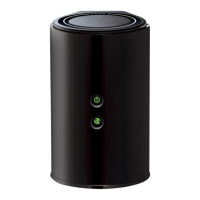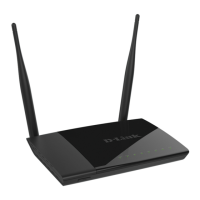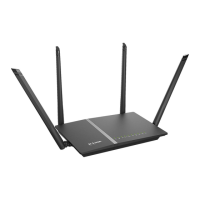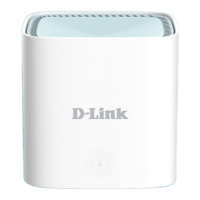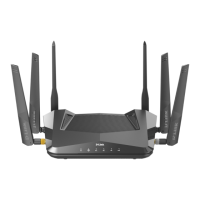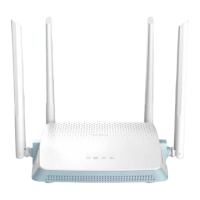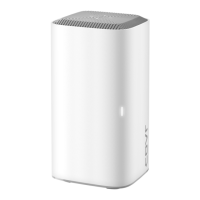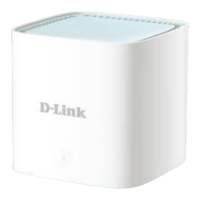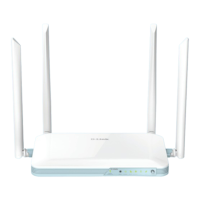142D-Link DIR-878 User Manual
Appendix C - Technical Specications
Technical Specications
Device Interfaces
tWireless Interface (2.4 GHz): IEEE 802.11n/g/b
tWireless Interface (5 GHz): IEEE 802.11 ac/n/a
tFour 10/100/1000 Mbps LAN ports
tOne 10/100/1000 Mbps WAN port
Antenna Types
tFour external antennas
Standards
tIEEE 802.11ac
1,2,3
tIEEE 802.11n
tIEEE 802.11g
tIEEE 802.11b
tIEEE 802.11a
tIEEE 802.3
tIEEE 802.3u
tIEEE 802.3ab
Security
tWPA
TM
- Personal/Enterprise
tWPA2
TM
- Personal/Enterprise
tWi-Fi Protected Setup (WPS) PIN/PBC
Power
tInput: 100 to 240 V AC, 50/60 Hz
tOutput: 12 V DC, 1.5 A
Temperature
tOperating: 0 to 40 °C (32 to 104 °F)
tStorage: -20 to 65 °C (-4 to 149 °F)
Humidity
tOperating: 10% to 90% maximum, non-condensing
tStorage: 5% to 95% maximum, non-condensing
Certications
tFCC
tCE
tUL/cUL
tC-Tick
tIPv6
tWi-Fi Protected Setup (WPS)
tWi-Fi Multimedia (WMM)
Dimensions & Weight
tL x W x H: 258.8 x 183.4 x 44.9 mm (10.2 x 7.2 x 1.8 in)
tx g ( x oz)
1 Maximum wireless signal rate derived from IEEE Standard 802.11a, 802.11g, 802.11n, and 802.11ac specications. Actual data throughput will vary. Network conditions and environmental factors,including volume of
network trac, building materials and construction, and network overhead, lower actual data throughput rate. Environmental factors will adversely aect wireless signal range.
2 Frequency Range varies depending on country’s regulation.
3 The DIR-878 does not include 5.25-5.35 GHz & 5.47-5.725 GHz in some regions.
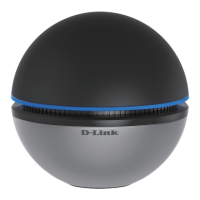
